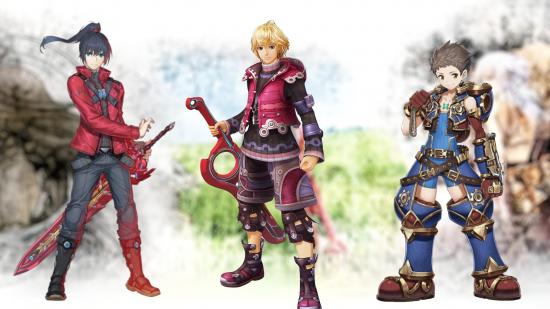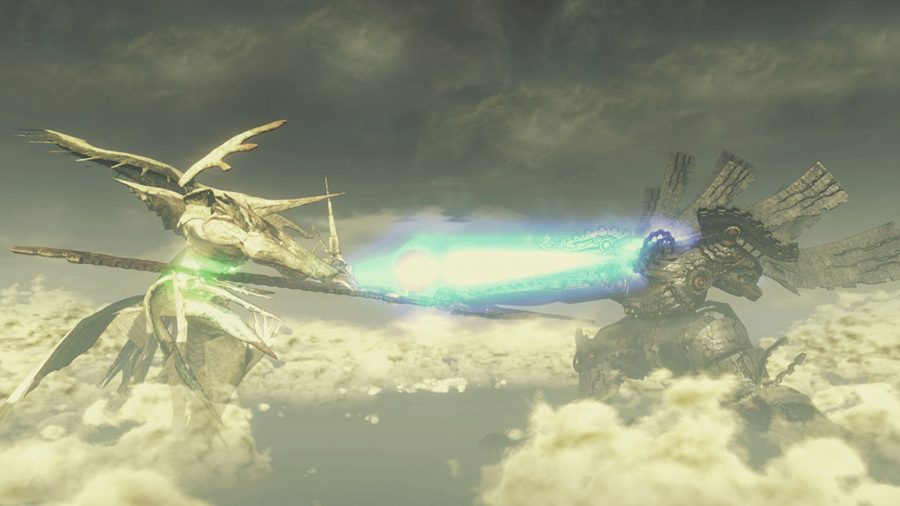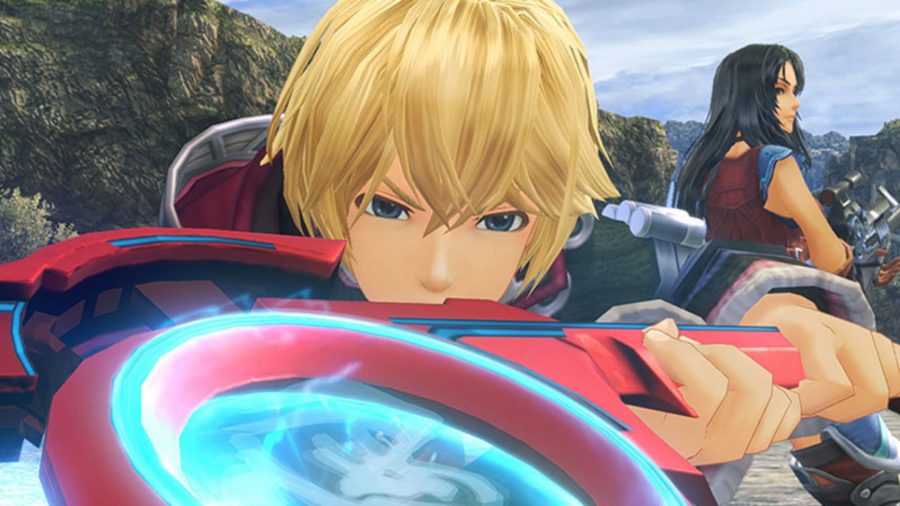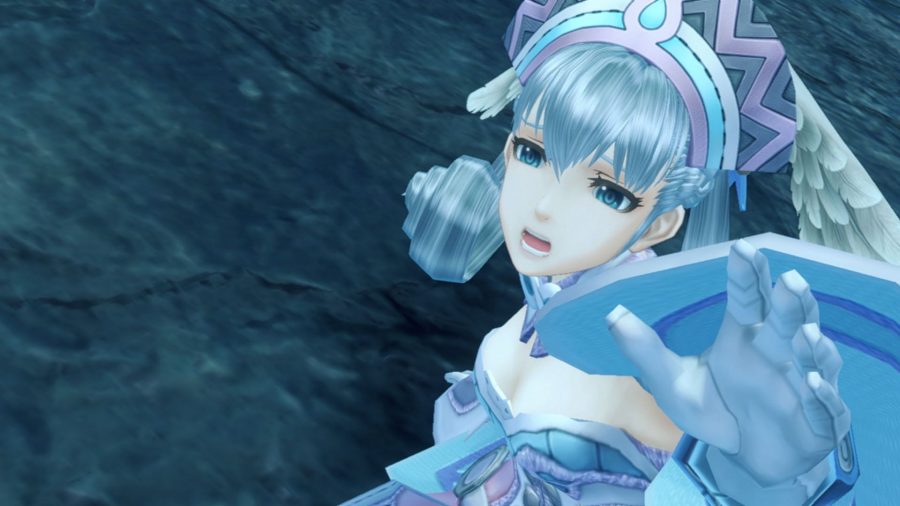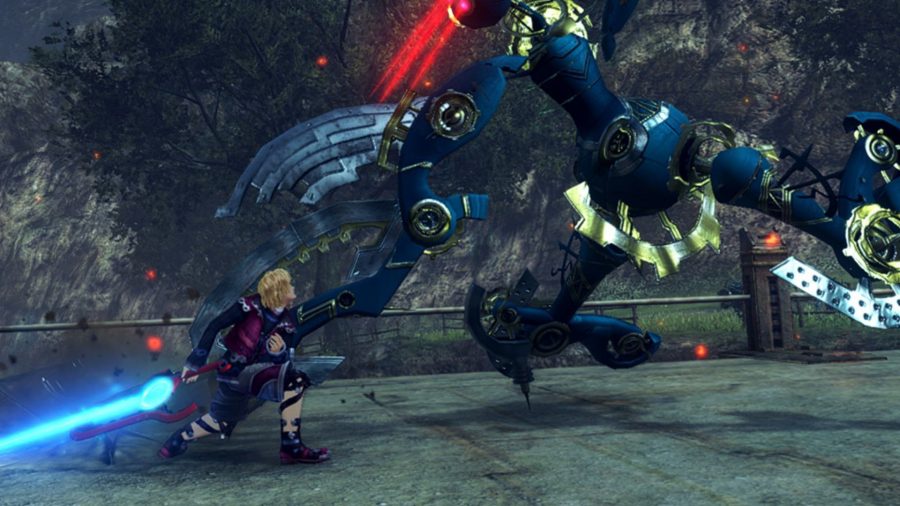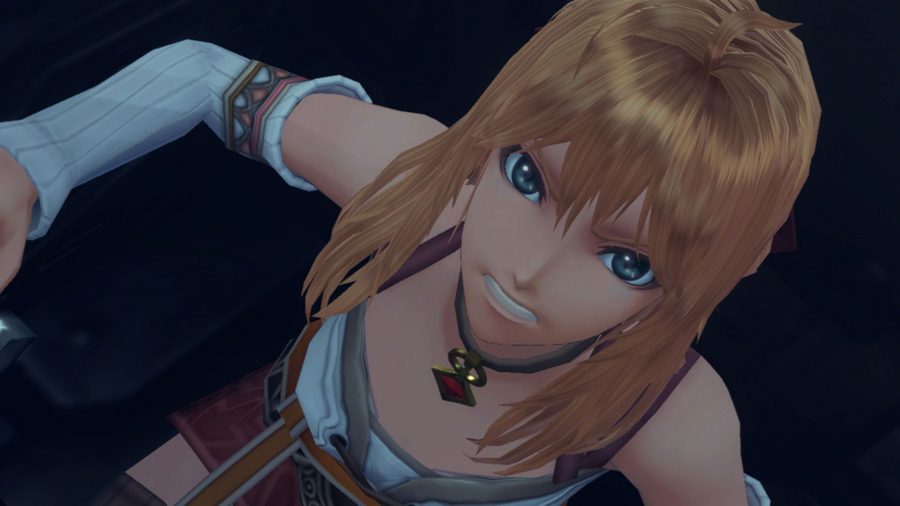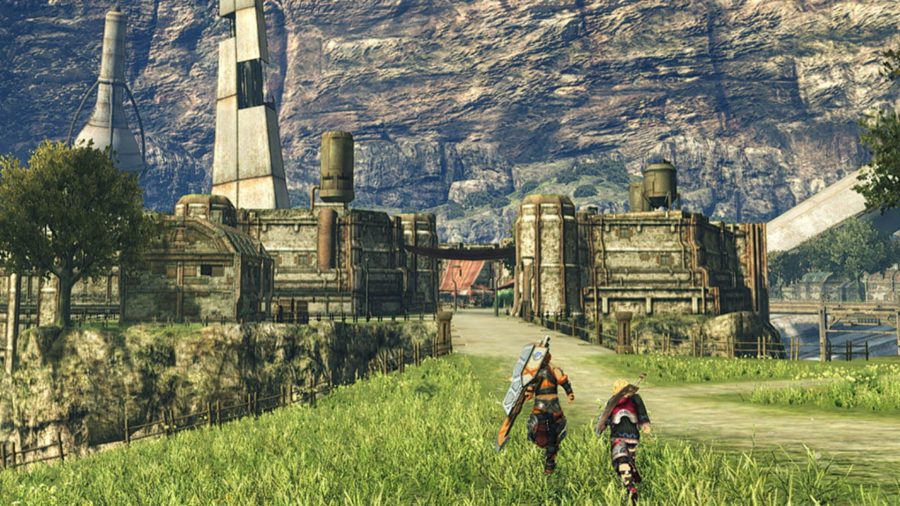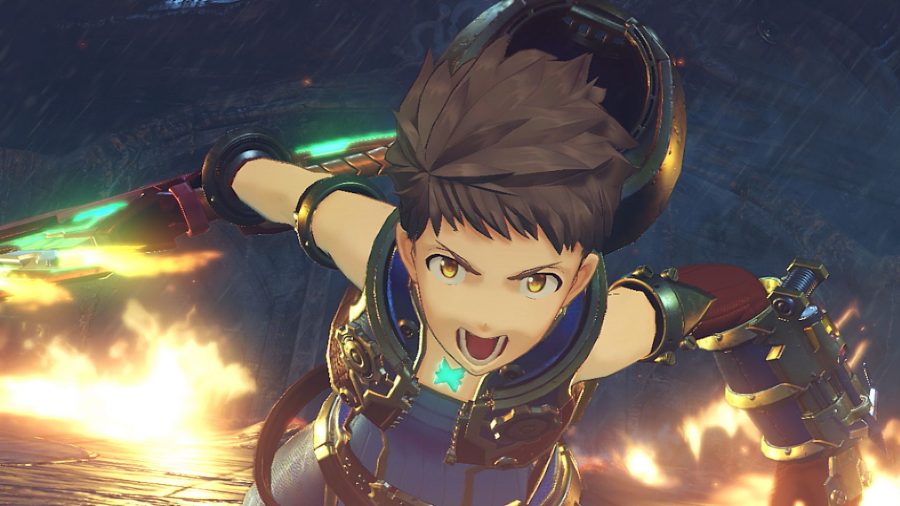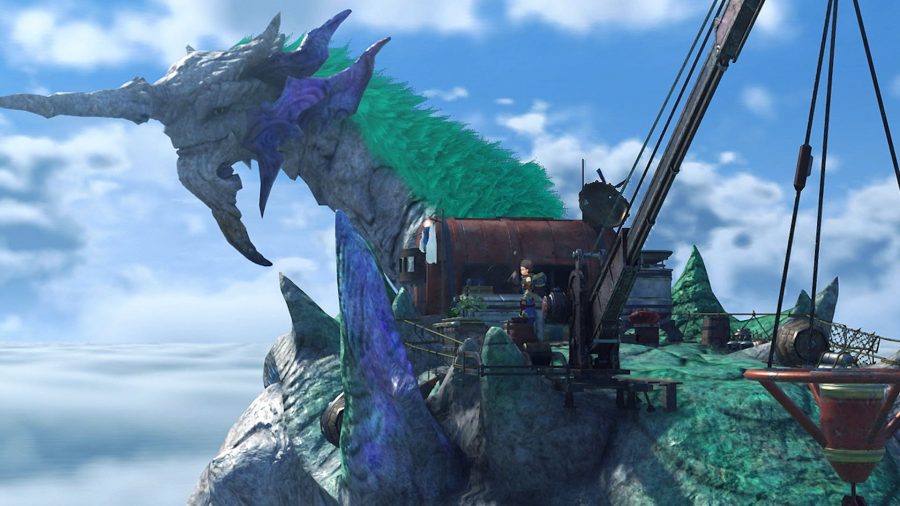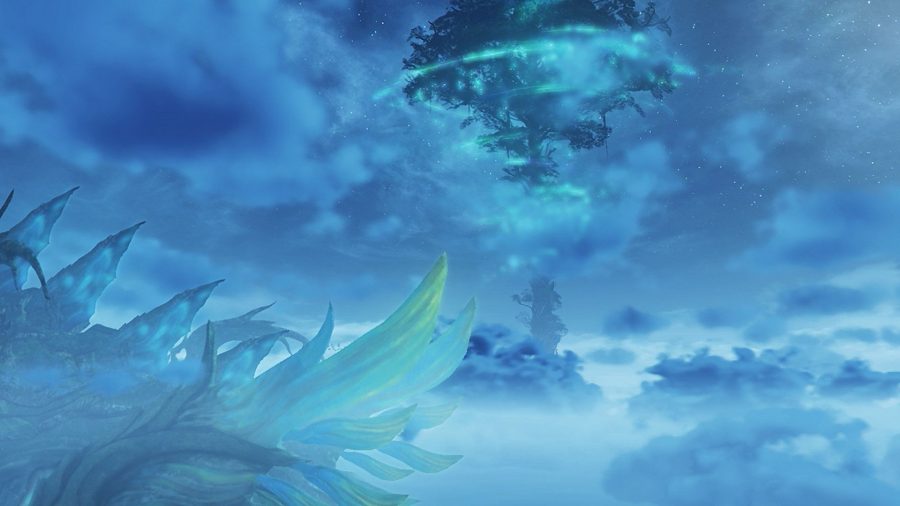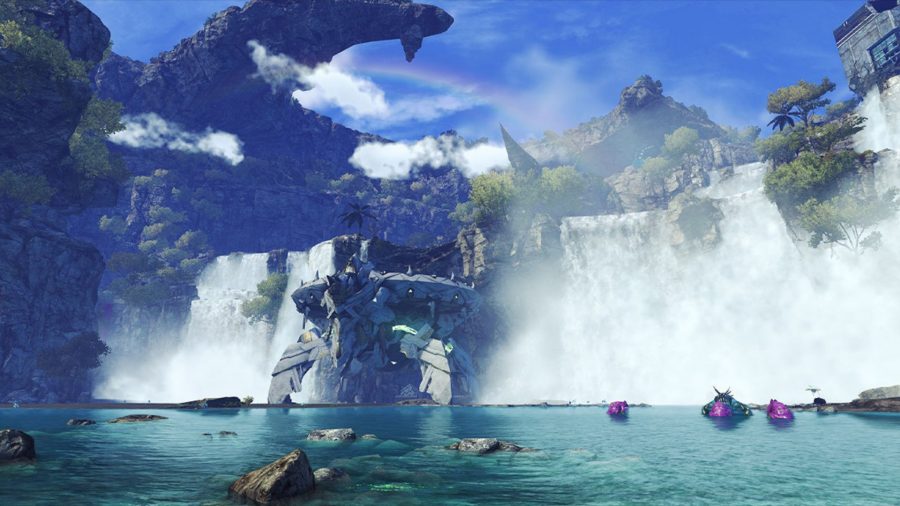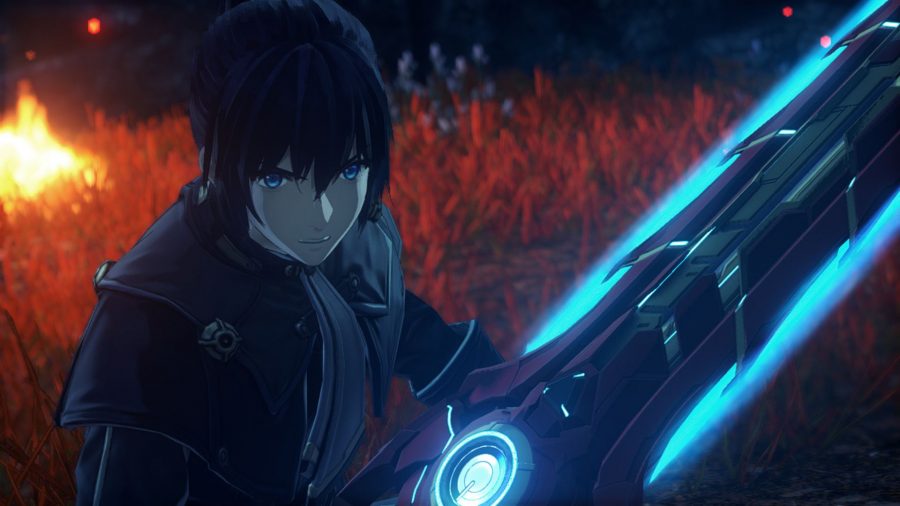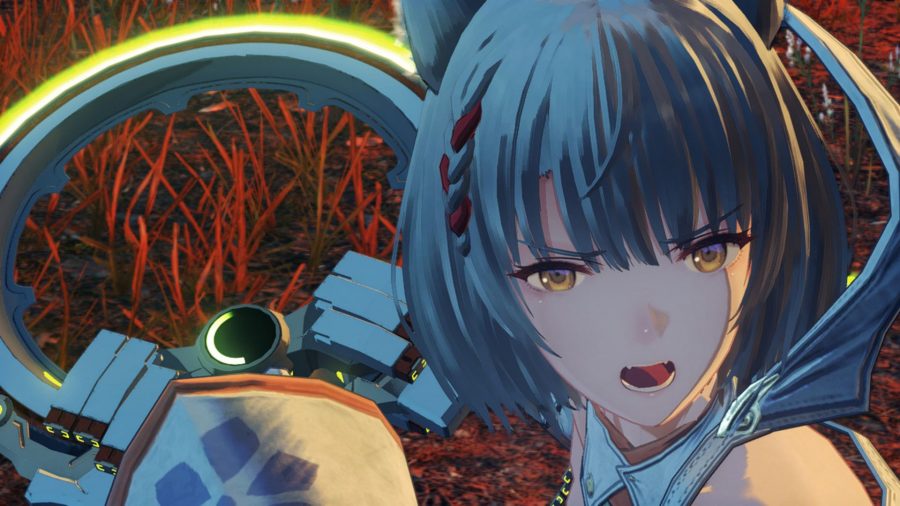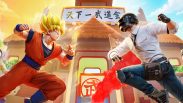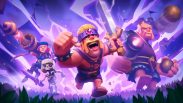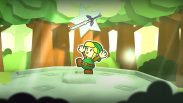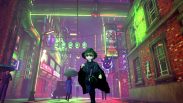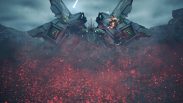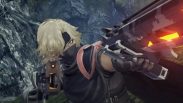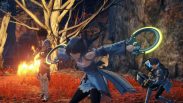Xenoblade Chronicles has always been an interesting series. It has an undeniable pedigree thanks to director Tetsuya Takahashi’s previous work on Xenogears, Chrono Trigger, and a couple of Final Fantasy games. It also only ever carved out quite a small niche among western audiences, mostly thanks to its launching on the Wii, when Nintendo was all-in on family games.
But now, it feels undeniable that Xenoblade is a headline Nintendo series. Not only is the fourth entry one of the biggest single-player games Nintendo has coming out this year, but it’s also a big-budget console-exclusive RPG in a year without too many of them. In fact, it’s a vital part of the Switch’s library, with Xenoblade Chronicles 2 + Torna: The Golden Country, Xenoblade Chronicles: Definitive Edition + Future Connected, and Xenoblade Chronicles 3 all launching after The Legend of Zelda: Breath of the Wild but before its sequel.
So, the game is clearly filling a gap for Nintendo, and it seems to be working, with both XC2 and XCDE selling almost four million copies combined. (That’s not crazy numbers, sure, especially for Nintendo (go look up the 51 Clubhouse Games sales number for a laugh (I’m only joking, you can find them here (spoiler, it’s the 21st best-selling Switch game)), but it’s a sign of success, especially for a game hewing pretty close to traditional JRPG concepts and mechanics).
But how did we get here? Where did the Xenoblade series come from, and how has it evolved and changed? That’s what I’m here to do. I’ve had the chance to chat to some people who were part of Operation Rainfall, a fan movement dedicated to getting the game released in America in the early 2010s, and asked them some questions about the series, how it has grown, and how much they think they actually contributed to getting it brought over in the first place.
Operation Rainfall
Operation Rainfall began in 2011, a group of fans on the IGN message boards dedicated to getting Xenoblade Chronicles, The Last Story, and Pandora’s Tower released in America. This snowballed from small chats on forums into social media pages and eventually a blog, Oprainfall.
Richard Ross, one of the old co-owners of Oprainfall, joined the movement a couple of months after its inception. His interest in The Last Story motivated him to get involved, and then, as he says, “one thing led to another and suddenly I was part of the staff, and then one of three leaders.” But why these games? What brought this group together in the first place?
For Richard, Xenoblade and The Last Story have pedigree (“how can you not release a game by the creator of Final Fantasy?”), while he said Pandora’s Tower “looked interesting, cool, and different,” paraphrasing one of the original founders of Operation Rainfall. He also hit the nail on the head as to why those games are so important – they “looked real good [sic] on a console starved for RPG content.”
So, they’d chosen the games, but why did they think they would succeed? Was it sheer passion? Well, no. These games had already been translated into English for a European launch, so they were much more likely to be successful in the first place. People had already done the work, they weren’t asking Nintendo to translate a hundred-hour RPG from scratch.
Why Nintendo of America didn’t want to release the game is a little harder to get your head around, with them even going so far as to block Nintendo of Europe from showing the game at E3. All Operation Rainfall wanted to do was end the drought of RPGs on the console (hence their name), but NoA never seemed like it wanted to budge.
I think it comes down to where the company thought it was at the time, focusing on its family-friendly, easy-to-use videogames that everyone can enjoy. Whose grandma is going to be fine listening to “now it’s Reyn time” for dozens of hours? I can understand the decision.
That didn’t stop Operation Rainfall though, who picked up steam slowly but surely after moving from the IGN message boards. Then, things sort of “exploded”, according to Steve Baltimore, currently a co-owner at the Oprainfall site, who joined the movement after it moved off the IGN forums and the Facebook page had started gaining some traction “when the media started to pick the campaign up in articles.”
“We had wild growth when the gaming media was publishing articles about this Amazon pre-order page,” as the game appeared online under the title Monado: Beginning of the World. From there, things seemed to get better and better, as they “organized a customer service call-in and letter-writing campaigns for this game” until it was announced. This letter-writing campaign also included sending cocktail swords similar to Shulk’s Monado in the envelope to Nintendo (“and I know that in fact, people did that”). They also urged people to pre-order the game on Amazon, leading it to the number one spot on the Amazon charts. And then it just kept snowballing.
“When the game was finally announced, we got a huge influx of new supporters”, Steve said, “these new people were very helpful in helping us push to get The Last Story and Pandora’s Tower subsequently released in North America by XSeed Games.” The people that joined the movement all shared a passion for Nintendo and RPGs, leading Operation Rainfall to ensure that their methods were reasonable.
“We stuck with certain rules such as keeping a positive presence [and] don’t comment about the campaign on posts in which Nintendo is posting about charity work,” Rich said. “It helped keep the image that we were ultimately just fans of Nintendo who want to buy games from them, instead of a rabid fanbase who will boycott Nintendo until they get what they want.”
Still, it wasn’t all easy going according to Rich. “We were actually in the process of moving on from the campaign before Xenoblade was announced. We were getting burnt out and ultimately tired, none of us wanted to be doing it for as long as we did. Once Xenoblade was announced it really energized us and we kept on going.” Organising a campaign like this while keeping everyone civil must have been hard work (I can’t imagine it happening nowadays).
Keeping things positive also probably helped keep Nintendo on side throughout. While no one I talked to had any direct contact with Nintendo at the time, Rich said there was one person from Nintendo of Europe “who essentially said we’re being noticed, they’re cheering for us, and to keep going. I might have seen them once in the IRC after Xenoblade was announced telling us ‘good job’.” It’s nice to imagine Nintendo of Europe cheering alongside them as Nintendo of America supposedly ignores it.
So, by all reports Operation Rainfall was a nice movement, keeping things positive in the name of great videogames. But, how much did they actually contribute to the game coming over to North America? Was Nintendo just unsure at the time, staying away from an untested IP until they saw the response in different regions? Or were they just flat-out not going to do it until Operation Rainfall kicked up a fuss? Well, that’s where things get a bit more divisive.
“This is a controversial topic depending on who you ask, my personal take on this evolves over time but remains consistent in that I don’t think we were the biggest factor in its US release,” Rich said. “We supplied the fan demand portion of the equation […but] it was up to Nintendo if it made sense financially to release the games.
“But to make the topic even more controversial, I personally think Xenoblade was coming out anyway, they were just looking for the right way to release it considering the Wii wasn’t considered a ‘hardcore’ gaming console. Out of the three games, I think the only one that definitely wouldn’t have been released in the US without us was Pandora’s Tower. I think XSeed was waiting to see how The Last Story does before picking that game up, I could be very wrong on that though.”
For Steve, it was a little different. “I would like to think Nintendo saw how many people were interested in having more core RPG titles on the Wii at a time when there wasn’t a whole lot of them on the console, and so they decided to take a chance on releasing Xenoblade Chronicles in North America.” Only Nintendo knows if Operation Rainfall had any sway, but one thing’s for certain: it did help build a very passionate community.
And, when Xenoblade Chronicles came out, it was a massive success. It’s hard to overstate the critical response – with many perfect scores and a Metacritic rating of 92/100 – but the sales were also good, with the game reaching number four in the UK charts in its first week (there’s no clear sales data for the US, sadly). Their passion had paid off – they got the game and it turned out to be really good. But that’s not the end of the story.
Mira and Alrest
The relative failure of the Wii U left a lot of series floundering. Sure, critical acclaim is great and everything, but if you’re stuck on a console that only sold thirteen million units in its lifetime, commercial success can only be relatively successful. And the next game in the series, Xenoblade Chronicles X, was relatively successful. It didn’t appear on Nintendo’s million-seller list near the time, but it did sell 200k copies in the US, a very strong showing on a console barely anyone bought.
But it’s not easy to keep a series alive if the player base is small, so it was pretty important that Nintendo made a successful console for Monolith Soft to build another RPG for. And they did just that with the Nintendo Switch, which has gone on to sell more than 100 million units.
Games sell well on the Switch, everyone knows it. When you compare Breath of the Wild’s 26.55 million copies sold to, say, The Last of Us Part II’s ten million copies sold, the difference is dramatic. People buy games on this console and a heck of a lot of them. And that’s exactly what Xenoblade needed. (And yes, that’s a fair comparison – two ten out of ten games exclusive to two consoles that have sold more than 100 million units).
Xenoblade Chronicles 2 launched in December 2017, coinciding perfectly with the successful launch of the Nintendo Switch. It takes you to the land of Alrest, where people inhabit the backs of large beasts who sail through the cloud sea. It can be a bit of a divisive game among Xenoblade fans, but that didn’t stop it from selling well, with 2.17 million copies sold in its first year.
Not only is it Monolith Soft’s best-selling game ever, but it also proved to us what the Xenoblade series is. Rather than taking us back to the world of the first game, XC2 is a sequel in the way Final Fantasy games are. As Tetsuya Takahashi said to IGN, “It’s a completely different world, with completely new characters. It’s a different game.”
So, Xenoblade Chronicles 2 did a lot for the series on its own merit, as Takahashi made clear to USgamer in 2018: “Xenoblade Chronicles 2 exceeded my expectations. We really saw more people pick the game up and experience it in the North American and European territories than we thought would do so… The sales of the Torna DLC are exceeding our expectations as well.”
Both Steve and Rich love how the series has evolved too. “[I] love it still, I credit the game [with] helping me find confidence in the things I do, so they have a special place in my heart,” Rich said, while Steve thinks that “the Xenoblade Chronicles franchise just gets better with every entry.
“Xenoblade Chronicles 2 and the Torna: The Golden Country DLC improved the combat from the first game, and I loved how all of the various blades had their own stories to tell.” Not only did these people take a central role in building a fandom for this series, but they’ve also stayed with it every step of the way.
Still, the sequel did alienate a lot of people, with many complaining about the huge number of tutorials (I love the game but I get this, there are still tutorial pop-ups 20 hours in…), the complicated combat, and occasionally unsubtle story. These are fair criticisms if you approach the game in a certain way – it definitely isn’t designed for everyone.
So, while I think that XC2 and Torna are the best the series has ever been, a lot of people don’t. A cursory search on Twitter can find lots and lots of arguments over which entry in the series is the best, which at least makes clear that there are still a lot of passionate fans. But another thing it makes clear is that the series hasn’t had its perfect moment – it might not have reached its zenith. Not yet at least.
Now to Aionios
Xenoblade Chronicles 3 is out on July 29, 2022. That’s pretty soon, and if our Xenoblade Chronicles 3 review is anything to go by, it looks like it achieves what the series hasn’t yet – it might be perfect. That’s just something that’s too hard to define, but it’s seriously good.
The main thing is that every sign coming from Nintendo is now a world apart from what it was back when Operation Rainfall was still just hanging out on message boards. It has dedicated whole directs to the last two games in the series, let the announcement of XC3 be the ‘one more thing’ moment in a mainline direct, and put a serious amount of support behind the series.
The question is, can it break out beyond where it is now? So far, the series has sold more than other traditional RPGs like Shin Megami Tensei V but hasn’t sold as well as similarly niche Nintendo titles, like Fire Emblem: Three Houses. A game with this much ambition feels like it has the potential to make a much bigger impact. Can it have a Breath of the Wild moment and launch the series up the ranks of Nintendo exclusives?
It’s impossible to predict, but this is the series’ best shot yet. Xenoblade Chronicles 3 looks to take all the stuff that was definitely good about the previous game – combat and exploration, primarily – and combine it with the things people miss about the original game – more restrained character designs and no more gacha mechanics, among other things.
But that’s not really my main takeaway from what Nintendo has shown us of the latest entry. My main surprise is just how far the series has come, something which says a lot about the way Nintendo has changed. Over the last ten years, Nintendo has changed from a company that said it would not release a Xenoblade game in North America, to letting one be the leader in its lineup.
I like to think that we shouldn’t need another Operation Rainfall. Remember when Nintendo localised Fire Emblem: Shadow Dragon & the Blade of Light? That was random (and much appreciated by Nintendo die-hards). It shows how Nintendo, a company that was so obsessed with family-friendly games to the extent that it chose to ignore others, has changed into a company that understands the varied nature of its audience. It’s a company that can sell millions of copies of 51 Clubhouse Games at the same time as a seriously dense RPG.
For Xenoblade to have the audience that it does now must have been near-unimaginable for anyone involved in the early days of Operation Rainfall. And whether they’re why the series exists in North America or not doesn’t matter – they’re a key part of the story of how Xenoblade Chronicles became a vital part of Nintendo’s roster. I’m just glad the series looks like it’s here to stay.
